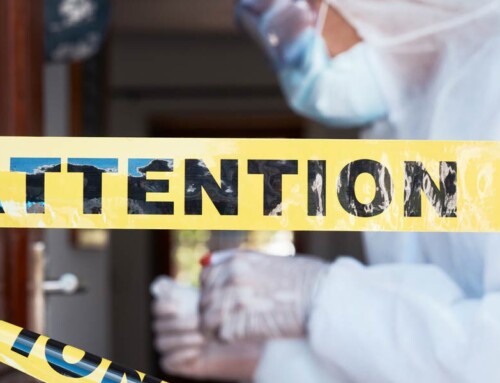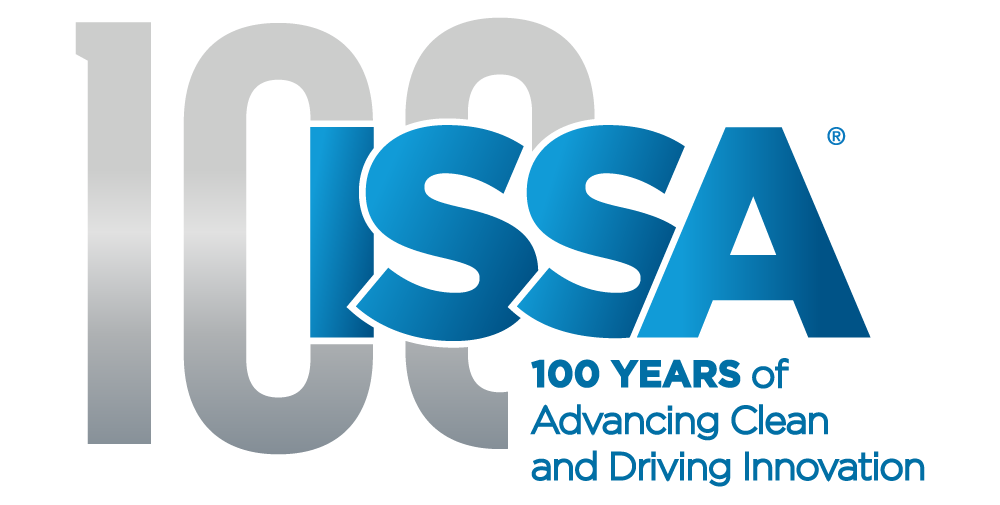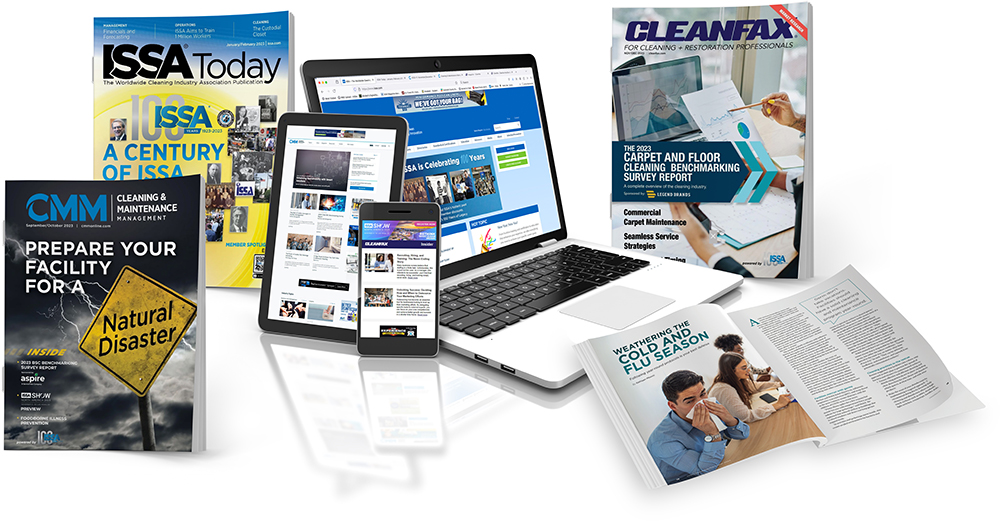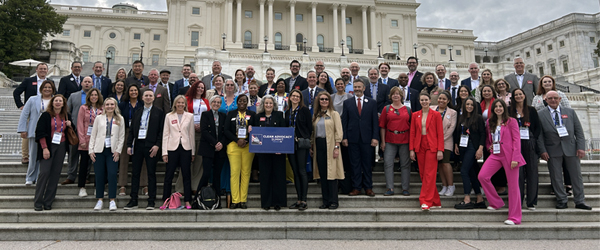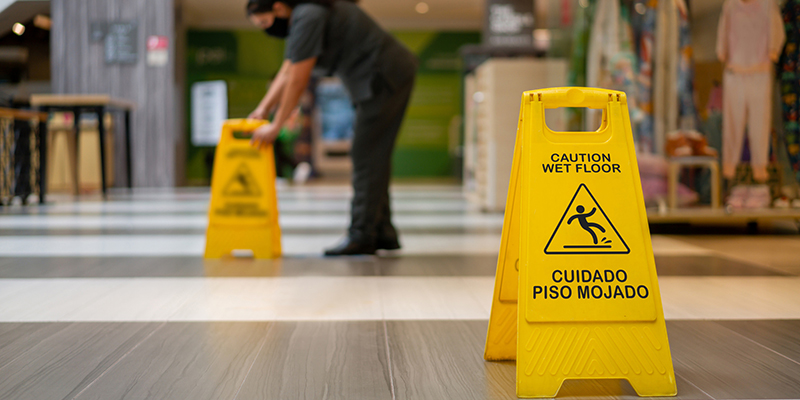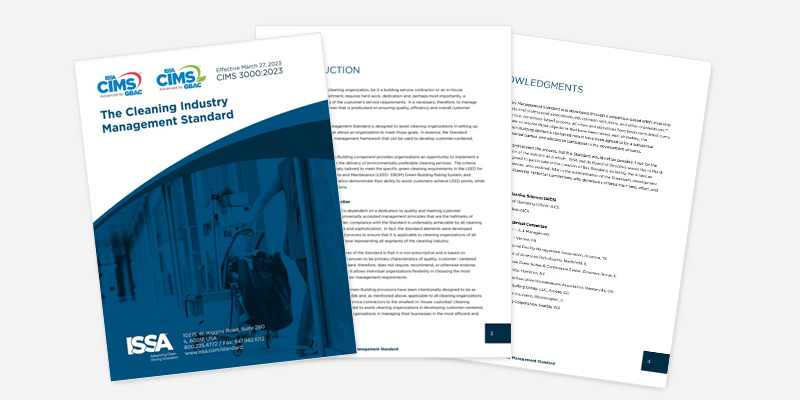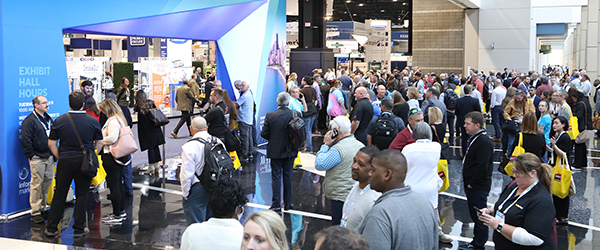Germs in Buildings

Workforce development must be more than watching a video or sitting in a classroom. ISSA is working with our members, along with federal and state governments, to map all available training centers and revise and develop training frameworks and curricula for “cleaning for health.” ISSA recognizes the power of collaboration and impactful engagement. To do this, we are putting a team together.
The built environment
The built environment is all structures built by humans, including our homes, workplaces, schools, planes, trains, buses, and cars. These are the spaces where we spend most of our time. We spend 90% of our life in these spaces, so if we live to 80 years old, then 72 of those years have been spent in the built environment.
As in any place on earth, microorganisms (bacteria, viruses, fungi) have been found in every part of the built environment that has been studied. They exist in the air, on surfaces, and on building materials, usually dispersed by humans, animals, and outdoor sources. Microbial communities and their metabolites can be good or bad—they can cause (or exacerbate) and prevent (or mitigate) human disease. All cleaning professionals should understand the field of microbiology of the built environment, how our built environments affect human health, and what actions they can take to ensure they are cleaning for health.
Register today for ISSA’s FREE OSHA-approved Cleaning for Health Workshop!
A history lesson
Throughout history, if we build something, we have sought to control germs and eradicate causative agents of disease. It is well documented that humans understand that unclean indoor environments can adversely affect health. This has dominated the cleaning industry for centuries. But what are some other key discoveries for our industry:
- In 1890, Koch’s postulates stated the four criteria as guidelines for establishing that microbes cause specific diseases. Then came the ability to separately count bacteria and fungi using a microscope from samples collected on culture media.
- By the early 1900s, research began to demonstrate how overcrowding, poor ventilation, and contamination of buildings by microorganisms and organic matter can lead to infection and disease.
- In the 1950s, we could identify specific bacteria and fungi from a sample using selective culture media.
- Research accelerated in the 1960s to understand the sources, survival, and how to control germs in the built environment. Associations between fungal spores in air and dust and allergy symptoms were established and quantified. Rates and mechanisms of germ emissions when humans cough, sneeze, and breathe, showed how communicable respiratory diseases spread.
- Since the 1960s, culture-based investigations have dominated studies of germs in the built environment and continue to dominate industrial hygiene sampling.
- Throughout the 2000s, RNA sequencing has enabled the identification of previously unculturable microorganisms and a deeper understanding of microbial ecology.
Assessing germ contamination
Assessing germ contamination in the built environment is critical in determining threats to public health. We have existing tools and recent technologies that will significantly impact the cleaning industry and become part of our toolbox. They will allow us to visualize the invisible germs and help determine how to clean and what products to use.
We can start with ATP detection, which is routinely used to measure surface cleanliness but cannot specify which microorganisms are present. There are other tools that you may not be aware of that can distinguish the living from the dead microorganisms, such as dye-based screening techniques, ethidium monoazide (EMA), propidium monoazide (PMA), quantitative polymerase chain reaction (qPCR), isotope probing, or bioorthogonal noncanonical amino acid tagging (BONCAT)—a powerful tool for analyzing microbial communities.
Buildings as microbial reservoirs
Studies have been conducted to characterize patterns, associations, and drivers of microbial communities in built environments. Many of these studies have demonstrated that most bacterial microorganisms found on surfaces in buildings originated from human skin and the mouth (talking, breathing, coughing, vomiting) and nose (breathing, sneezing). These studies suggest that humans are the primary source of microorganisms found in the built environment.
Studies in hospitals, public transport, and homes have found human-associated microorganisms, including common potential pathogens (that cause disease) such as Pseudomonas spp., Acinetobacter spp., Staphylococcus spp., and Streptococcus spp., as well as common commensals (that live in harmony with humans) such as Anaerococcus spp., Prevotella spp., Corynebacterium spp., and Neisseria spp.
A study that quantified the abundance of bacteria and fungi emitted by a person indoors estimated the total particles to be 31 milligrams per hour, with approximately 37 million bacteria and 7 million fungi per hour being dispersed.
It is estimated that a cough produces approximately 3,000 droplets, whereas a sneeze releases 40,000 droplets, and each droplet may contain as many as 200 million virus particles. Particles from your sneeze can travel up to 26 feet, coughing up to 6 feet, and breathing up to 3 feet. A toilet flush sneeze without the lid closed can travel up to 8 feet away.
People inhale a considerable volume of indoor air daily. Studies show that this is, on average, 16,000 liters or 4,200 gallons for adults. Therefore, it stands to reason that the interactions between humans and buildings that facilitate microbial exposure will profoundly impact human health.
Cleaning professionals need to know that culture studies suggest that the most common microorganisms associated with indoor surfaces belong to the fungal genera Cladosporium, Penicillium, Aspergillus, and Stachybotrys (in damp buildings) and the bacterial taxa Corynebacterium, Staphylococcus, Lactobacillus, Streptococcus, Enterobacteriaceae, Acinetobacter, Sphingomonas, Mycobacterium, Methylobacterium, Bacillus, and Pseudomonas. However, the growth potential of these organisms is determined by water activity (a measure of water availability in a material), chemical composition, pH, and the physical properties of surfaces. Keeping building materials dry, that is, with a water activity below 0.9 for bacteria and 0.6 for fungi, ultimately limits growth on most materials.
- Temperature affects both water activity and microbial growth. Warmer temperatures promote rapid growth and many bacteria can still flourish at lower temperatures.
- Sunlight, both UV and visible light, has been shown to alter the survival of microorganisms surviving in the built environment.
- Moisture is one of the most potent contributors to microbial survival in air and on surfaces.
- Low relative humidity (20-30%) increases the ability of microorganisms to become aerosolized from surfaces and suspended due to occupant traffic or disturbance.
- High relative humidity (>80%) contributes to microbial survival and activity on surfaces.
- Surface material is also critical; although all surfaces can function as a physical substrate, the chemical composition of the material provides a food source for the colonizing microorganisms and potentially selects for different species. Studies have demonstrated that cellulose-based surface materials, such as, for example, wood, can stimulate microbial growth more rapidly than inorganic materials, such as gypsum, mortar, and concrete.
- pH is also important, as many metabolic processes are more energetically favorable at neutral pH; therefore, materials with an alkaline or acid pH can retard microbial growth.
- Physical composition of the surface material will affect which organisms can access the surface. Even the surface roughness, porosity, and position in the environment (for example, the ceiling or the floor) can influence the dynamics of microbial colonization and growth. However, how these variables affect microbial metabolism and fungal–bacterial interactions remains to be elucidated and is an active area of research.
- Biofilms can form on built environment surfaces, especially in moist areas such as sinks and bathroom showers, facilitating transfer through everyday activities.
- Microenvironments within carpets can create pockets of high relative humidity that can aid in the growth, prolonged survival, and transfer of microorganisms to people.
How should the cleaning industry deal with large variability in local environmental conditions, including local weather, building materials, humidity, temperature, and indoor activities?
Distinguishing the living from the dead (or inactive)
The viability of microorganisms that exist in indoor environments is an area of great interest for the cleaning industry. Advances in techniques to visualize microorganisms in the air, in water, or on surfaces, and to determine their viability and activity, will significantly change how we clean. Are the bacteria multiplying, fungi or mold growing, or are the viruses surviving? Are the bacteria and fungi producing microbial volatile organic compounds (MVOCs) that can influence human health outcomes? Knowing the answers will help us ensure with what and how we clean has the least negative health consequences.
For example, dust is a rich, heterogeneous mixture of materials, providing plentiful substrate for microbial growth. When exposed to moisture, the resulting germination of fungal and bacterial spores or dormant cells leads to an increase in metabolic products, which can include chlorinated hydrocarbons, amines, terpenes, alcohols, aldehydes, and ketones, as well as sulfuric and aromatic compounds.
We know that microbial metabolic products can affect human health and cause nasopharyngeal inflammation, wheezing, cough, shortness of breath, onset and exacerbation of asthma, bronchitis, respiratory infections, allergic rhinitis, eczema, and other allergies.
Air and surfaces and infections
Everyone who enters built spaces has extensive interactions with the air and surfaces. These interactions have traditionally been examined only regarding the transmission of potential disease-causing germs. Microbial transmission between occupants and the built environment is reciprocal. For example, bacterial pathogens such as Bacillus anthracis, Legionella pneumophila, and Mycobacterium tuberculosis; fungal pathogens such as Cryptococcus neoformans, Histoplasma capsulatum, and Aspergillus fumigatus; and pathogenic viruses such as rhinovirus and influenza virus, can be transmitted by direct inhalation. Other pathogens, such as Clostridium difficile, Staphylococcus aureus, Pseudomonas aeruginosa, Pseudomonas putida, and Enterococcus faecalis, as well as norovirus and influenza virus, can be transmitted through surface contact. As people move throughout the built environment, microorganisms are constantly transferred.
Are all germs harmful?
Throughout history, most efforts to determine the influence of indoor microorganisms on health have focused primarily on the negative impact of disease and allergies. How would the way we clean change if we could shift our understanding of the microbiology of the built environment from a purely negative role (that is, causing disease) to combining a positive role (that is, protective or preventive)?
Germs have adapted to the built environment
The physical and chemical properties of buildings and the surface materials encountered by microorganisms in the built environment are quite different from materials and surfaces in the natural environment. Wood surfaces are often treated with chemicals to preserve them. Gypsum, fiberboard, drywall, synthetic carpets, and surface lacquers create environments unlike any other. Genomic sequencing and culture studies show that different surface chemistries and physical structures promote the growth of various germs. For example, shower curtains are mainly colonized by bacteria associated with Sphingomonas and Methylobacterium. Physical surfaces in buildings have been shown to be primary sites for bacterial adhesion and biofilm formation.
The cleaning industry is essential
The cleaning industry has a significant role in improving human health outcomes by cleaning for health. There is an immediate need by the cleaning industry to improve the measurement of cleanliness.
The COVID-19 pandemic led to a rapid expansion and the use of real-time sensors for indoor air quality. We need the development of real-time microbial sensors to detect exposures for individuals within the built environment that can be correlated with health and disease metrics. Our default approach is to attempt to make the built environment as hostile to microbial life as possible to prevent microbial infections.
Buildings are not isolation chambers. If we spend 90% of our life indoors, then there is a need to better understand why, when, and how microorganisms transfer from the built environment to occupants, when these transfers lead to disease, and when these interactions are beneficial to built environment occupants.

